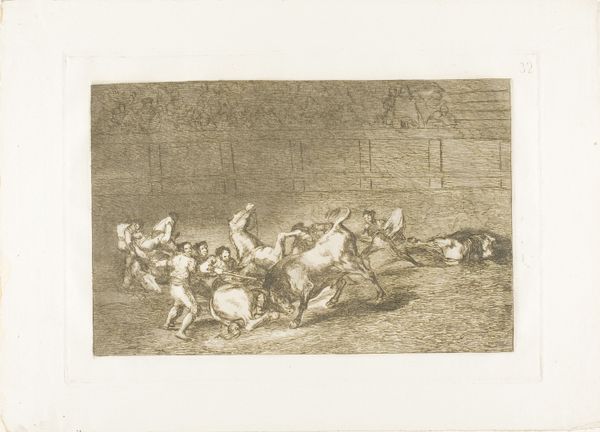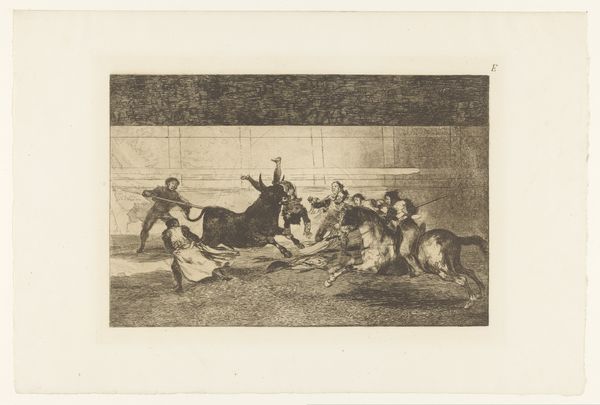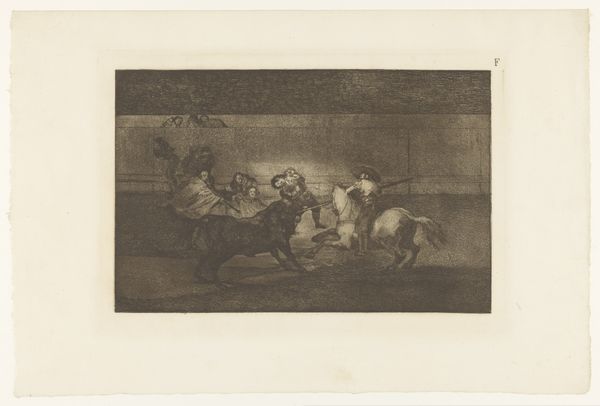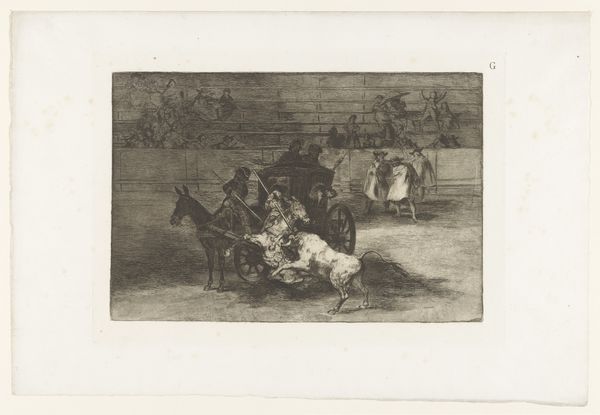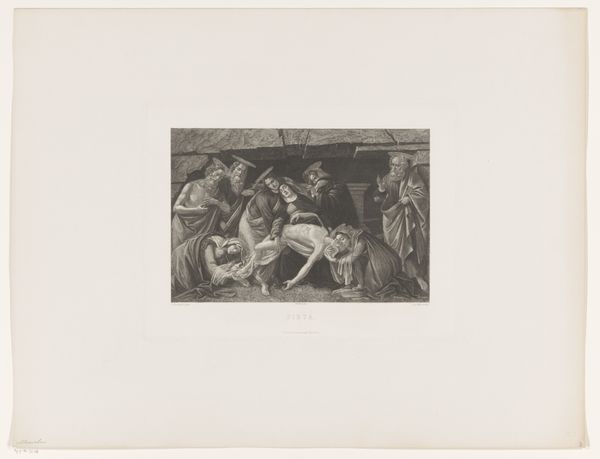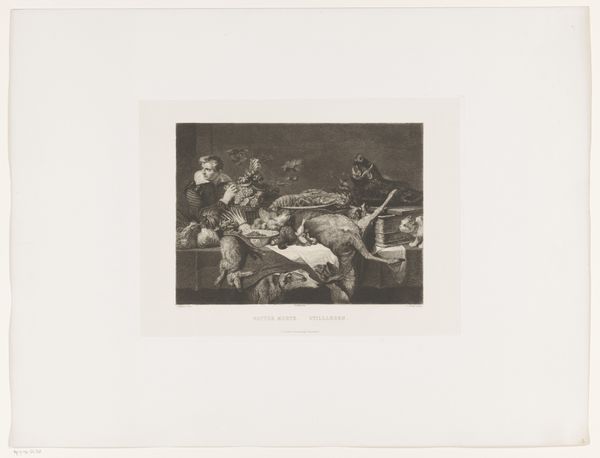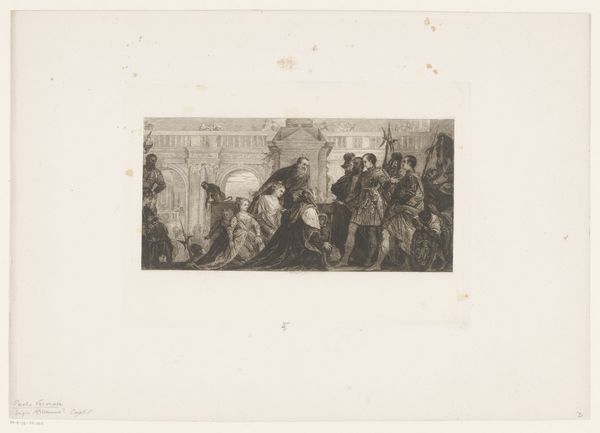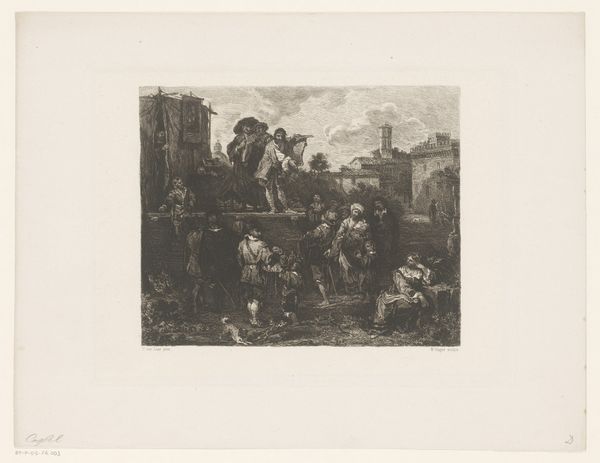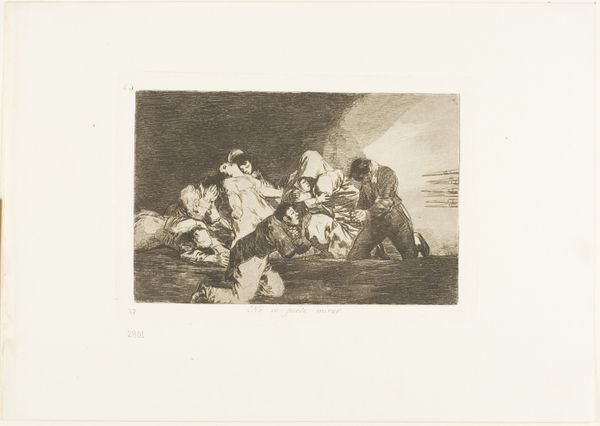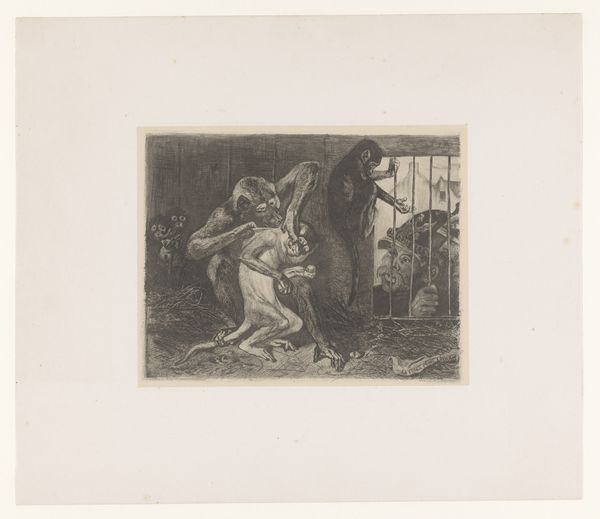
Dimensions: height 243 mm, width 352 mm
Copyright: Rijks Museum: Open Domain
Editor: This print, an etching and engraving from 1876, titled "Horse overthrown by a Bull," comes to us from Francisco de Goya, hanging here in the Rijksmuseum. It has an intense feeling, a sort of tragic ballet frozen in time. The textures, achieved through the etching, really add to that drama. What's your interpretation of this piece? Curator: Oh, it's more than just a tragic ballet, don't you think? It's Goya grappling with the human condition, disguised as a bullfight! I see a whirlwind of mortality, a chaotic dance between man, animal, and fate. Those shadowy figures in the background, almost like ghostly spectators, they represent us, the viewers, passively witnessing life's brutal spectacles. The fallen horse—isn't that the romantic hero, brought down by primal instinct? Tell me, what feeling does the tilted perspective give you? Editor: It amplifies the sense of disequilibrium, everything feels unstable, about to collapse. Curator: Precisely! It is a moment suspended—a scream before it happens! And look at how Goya uses light and dark to create this dramatic tension—that stark contrast, isn’t that just life itself: a fleeting moment of brilliance overshadowed by the encroaching darkness? For me, the romantic era comes alive here, so filled with passion, terror, and maybe a dash of gallows humor. Editor: That's amazing, I never thought about that dark humor element before, that makes so much sense! Curator: Art reveals itself bit by bit, doesn't it? Next time you see an image with tilted lines, will it be more than imbalance to you? Editor: For sure. I’ll be thinking about romantic heroes being humbled and laughing at the face of impending doom. Thanks for shedding some light on that!
Comments
No comments
Be the first to comment and join the conversation on the ultimate creative platform.
